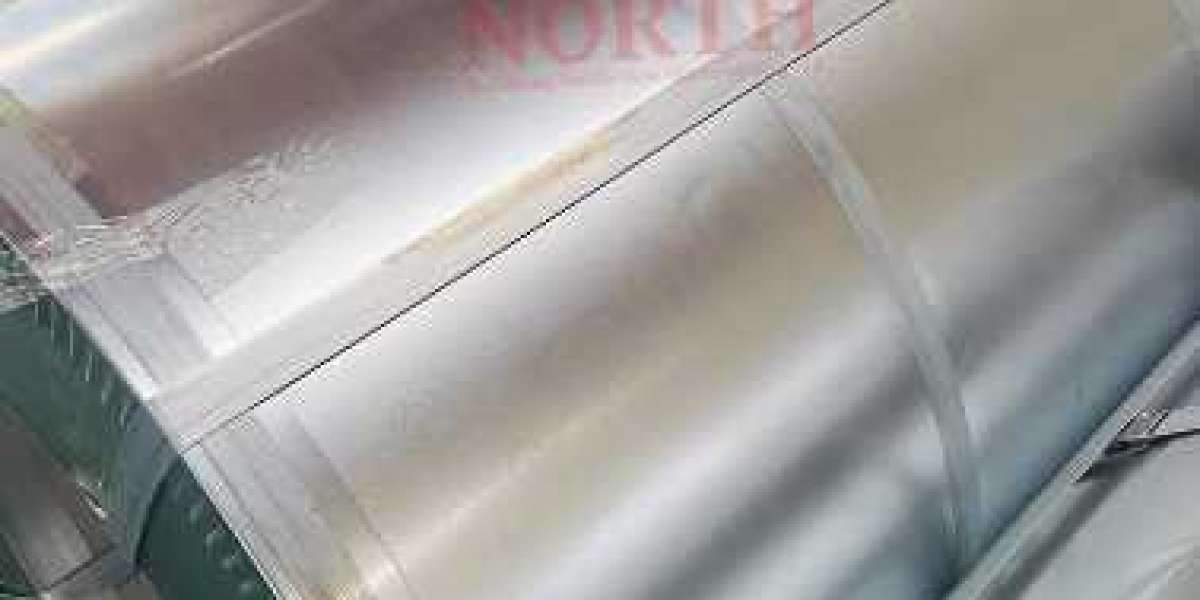Unleashing the power of steel, galvanized steel coils have become a game-changer in various industries. From construction to automotive, these versatile coils offer unparalleled strength and durability. But do you know what sets them apart? In this blog post, we will explore the classifications and differences of galvanized steel coils, shedding light on their coating types and manufacturing processes.
Classifications of Galvanized Steel Coils based on Coating Type
Galvanized steel coils are a popular choice in various industries due to their durability and corrosion resistance. They undergo a process called galvanization, where a protective coating is applied to the surface of the steel. These coatings can vary based on the type of galvanized steel coil.
There are two main classifications of galvanized steel coils based on coating type: hot-dip galvanized (HDG) and electro-galvanized (EG). Let's take a closer look at each classification.
Hot-dip galvanized (HDG) coils are created by immersing the steel in a bath of molten zinc. This process forms a thick layer of zinc coating on both sides of the coil, providing excellent protection against rust and corrosion. HDG coils are known for their high durability and longevity, making them suitable for outdoor applications such as roofing, fences, and structural components.
On the other hand, electro-galvanized (EG) coils involve an electrolytic process where a thin layer of zinc is deposited onto the surface of the steel. While not as thick as HDG coatings, EG coatings still offer good corrosion resistance and provide an appealing finish. EG coils find applications in appliances, automotive parts, and indoor building materials.
Understanding the different classifications of galvanized steel coils based on coating type is essential when choosing the right material for your project. Whether you opt for hot-dip or electro-galvanized coils depends on factors such as environmental conditions and specific application requirements.
Differences between Hot-Dip and Electro-Galvanized Steel Coils
When it comes to galvanized steel coils, there are two main classifications based on the coating process: hot-dip galvanized and electro-galvanized. While both processes result in a protective zinc coating on the steel surface, there are some key differences between the two.
Hot-dip galvanizing involves immersing the steel coil into a bath of molten zinc. This process creates a thick layer of zinc that provides excellent corrosion resistance and durability. It is commonly used for outdoor applications that require maximum protection against rust and weathering.
On the other hand, electro-galvanizing is an electroplating process where a thin layer of zinc is applied to the steel coil using an electric current. The resulting coating is smoother and more uniform compared to hot-dip galvanizing. Electro-galvanized steel coils are often used for indoor applications or products that require a smooth finish.
In terms of cost, hot-dip galvanizing tends to be more expensive due to its thicker coating and higher material consumption. However, it offers superior protection in harsh environments. Electro-galvanized coatings are thinner and less durable but offer sufficient corrosion resistance for many applications at a lower cost.
Understanding these differences can help you choose the right type of galvanized steel coil for your specific needs. Whether you require maximum protection or cost-effectiveness, both options have their advantages in different scenarios. It is important to consider factors such as the application, environment, and budget when selecting between hot-dip and electro-galvanized steel coils.
Benefits of Using Galvanized Steel Coils
When it comes to choosing the right material for your construction or manufacturing needs, galvanized steel coils offer numerous advantages. Here are some key benefits:
1. Corrosion Resistance: Galvanized steel coils are coated with a protective layer of zinc, which acts as a barrier against rust and corrosion. This makes them highly resistant to moisture, weathering, and other environmental factors that can damage ordinary steel.
2. Longevity: The zinc coating on galvanized steel coils provides exceptional durability and longevity. These coils have an extended lifespan compared to untreated steel, making them a cost-effective choice for long-term projects.
3. Low Maintenance: Thanks to their resistance to rust and corrosion, galvanized steel coils require minimal maintenance over time. This not only saves you money but also reduces downtime associated with repairs or replacements.
4. Strength and Versatility: Galvanized steel is known for its high tensile strength, meaning it can withstand heavy loads without deforming or breaking easily. Additionally, this material is incredibly versatile - it can be molded into various shapes and sizes without losing its structural integrity.
5. Sustainable Choice: Choosing galvanized steel helps promote sustainability in the construction industry due to its recyclability factor. At the end of their lifecycle, these coils can be recycled into new products rather than ending up in landfills.
6.Financial Savings: Opting for galvanized steel coils may initially seem like a higher upfront investment compared to other materials but consider the long-term financial savings they provide due to reduced maintenance costs and extended product lifespan.
7.Wide Range of Applications: Galvanized steel coils find applications across various industries such as automotive manufacturing, construction projects (including roofing), agriculture equipment production etc., thanks to their superior performance characteristics.
Galvanization enhances the properties of regular steels by adding a protective layer that prevents corrosion from occurring effectively increasing durability at an affordable price. The benefits of using galvanized steel coils range from corrosion resistance to low maintenance and cost savings. This versatile material can be used in various industries, making it a popular choice for many construction and manufacturing projects. Overall, galvanized steel coils offer a reliable, long-lasting, and sustainable solution for your building or production needs.
Applications of Galvanized Steel Coils in Various Industries
Galvanized steel coils are widely used in various industries due to their excellent corrosion resistance and durability. Let's explore some of the applications of these versatile coils across different sectors.
In the construction industry, galvanized steel coils are commonly used for roofing, siding, and structural components. The zinc coating on the coils provides protection against rust and extends the lifespan of buildings in harsh weather conditions. Additionally, galvanized steel is lightweight yet strong, making it an ideal choice for constructing bridges and highways.
The automotive industry also relies heavily on galvanized steel coils for manufacturing car bodies, chassis parts, and other components. The corrosion-resistant properties of these coils ensure that vehicles remain sturdy and safe even in corrosive environments or areas with high humidity.
Another major application is in the electrical industry where galvanized steel coils are utilized for producing electrical conduits and cable trays. These products require a durable coating to withstand exposure to moisture, chemicals, and potential damage during installation.
The agriculture sector also benefits from using galvanized steel coils. Farm equipment such as grain storage silos, irrigation systems, fencing materials all rely on these coatings to resist rust caused by exposure to outdoor elements like rainwater or fertilizers.
Moreover, galvanized steel finds its use in manufacturing household appliances like refrigerators and washing machines where its protective coating ensures longevity despite constant contact with water or other liquids.
These examples only scratch the surface regarding how extensively galvanized steel coils are employed across various industries worldwide! From infrastructure development to consumer goods production - their versatility makes them a reliable choice!
Conclusion
Galvanized steel coils are a versatile and widely used material in various industries. They offer excellent protection against corrosion and provide durability, making them an ideal choice for many applications. With different classifications based on coating type, such as hot-dip and electro-galvanized, there is a suitable option available for every specific need.
Hot-dip galvanized steel coils are created by immersing the steel in a bath of molten zinc, while electro-galvanized steel coils undergo an electrolytic process to coat the steel with zinc. These two methods result in slightly different characteristics and properties.
The benefits of using galvanized steel coils are numerous. They offer exceptional resistance to rust and corrosion, ensuring that structures or products made from this material have a longer lifespan. Galvanized coatings also provide superior protection even when exposed to harsh environmental conditions or chemicals.
The versatility of galvanized steel coils is evident through their usage across various industries. From construction and automotive manufacturing to agriculture and electrical engineering, they find application in diverse sectors due to their strength, affordability, and protective qualities.Galvanized steel coils play an essential role in modern industries by providing reliable protection against corrosion while maintaining structural integrity. The classification based on coating type allows users to choose the most suitable option for their specific requirements.
Whether it's constructing sturdy buildings or producing durable vehicles, galvanized steel has proven its worth time and again. Its ability to withstand harsh conditions makes it an ideal choice for projects where longevity is crucial.



